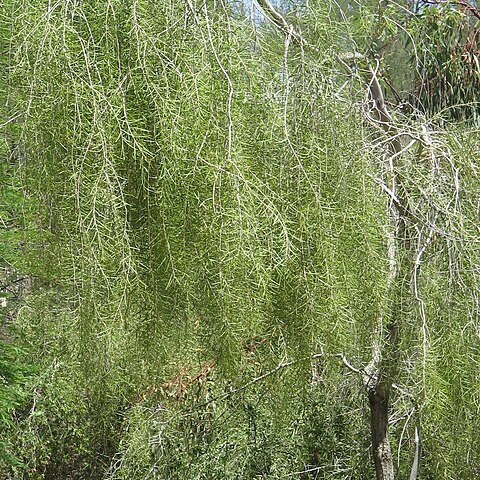Graceful glabrous tree 4–16 m high. Branchlets pendulous (mature plants). Phyllodes linear to very narrowly elliptic, straight to slightly curved, often slightly kinked at the gland, 4–11 cm long, 2–5 mm wide, l: w ratio = 16–40, acute to short-acuminate, thinly coriaceous, pale green, glabrous, with 3 or 4 main veins and sometimes sparsely anastomosing minor veins in between; gland 4–10 mm above pulvinus. Inflorescences simple or rudimentary 1-or 2-headed racemes with axes to 1 mm long, 1 or 2 per axil; peduncles 5–12 mm long; basal bract persistent; heads globular, 4–5 mm diam., densely 30–35-flowered, creamy to pale yellow. Flowers 5-merous; sepals free. Pods flat, breaking readily at constrictions between seeds, to 10 cm long, 5–7 mm wide, firmly chartaceous, reticulate, narrowly winged. Seeds longitudinal, oblong-elliptic, c. 5.5 mm long, dull, brown, exarillate.


